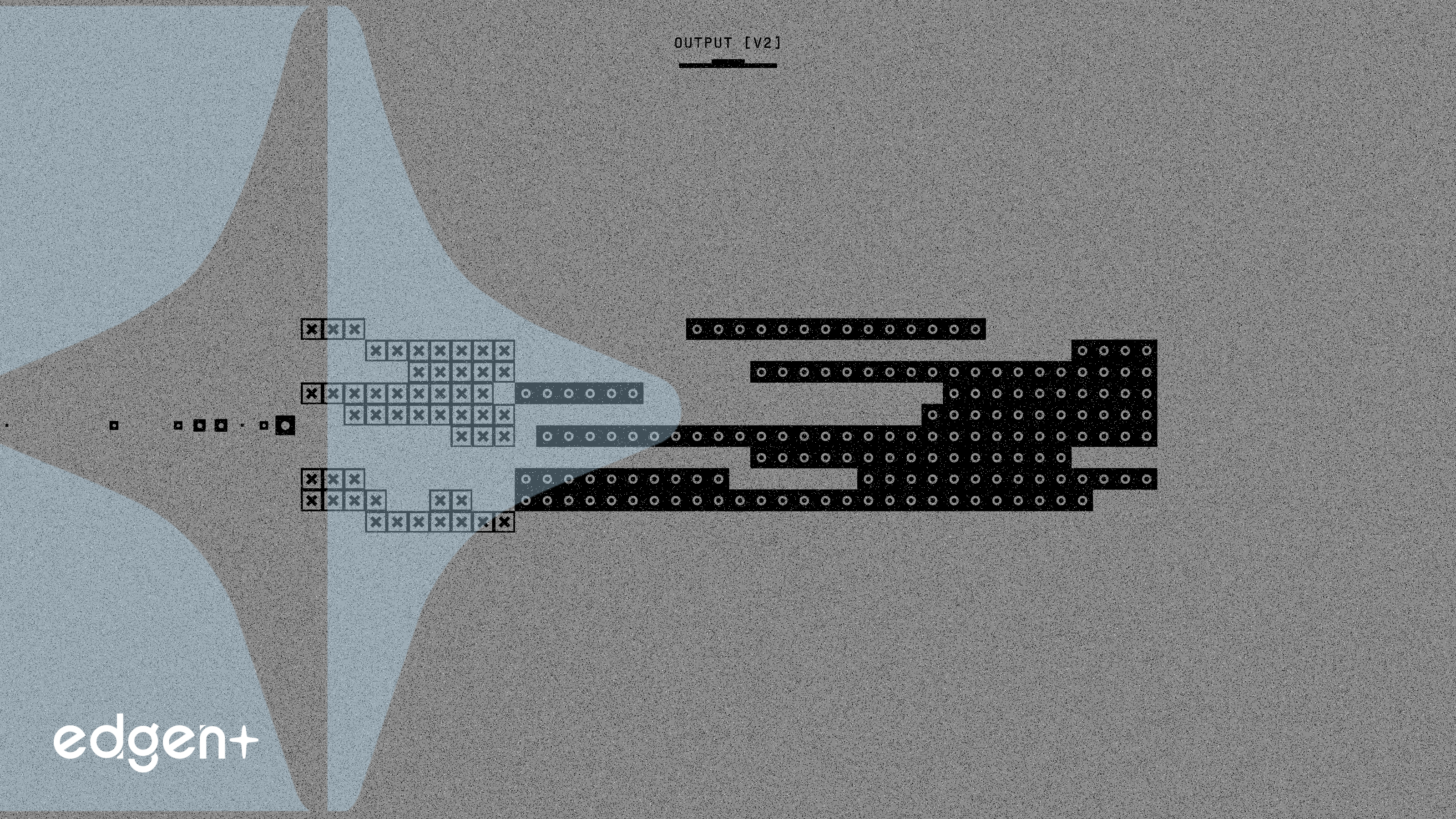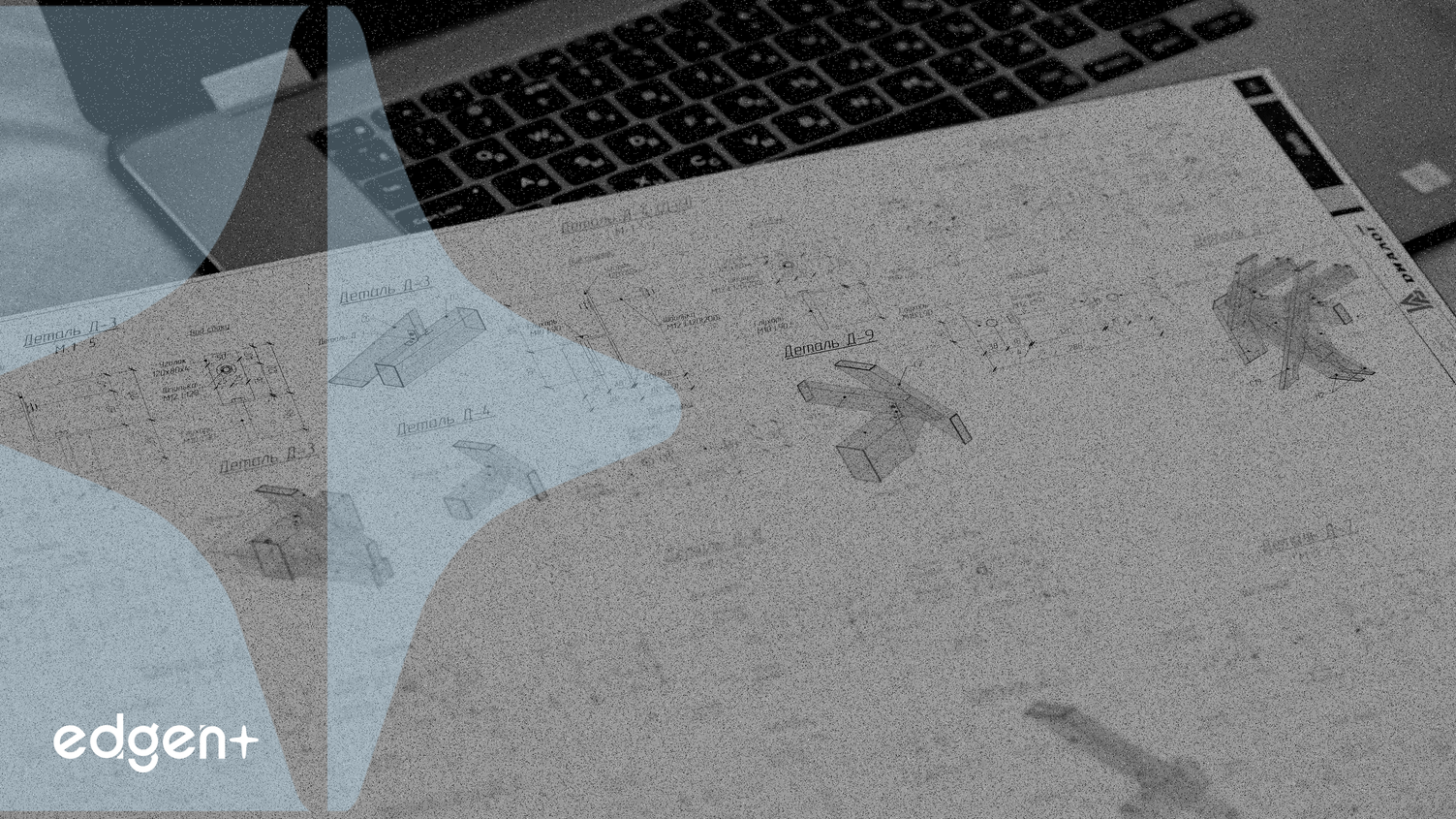
No Data Yet
Related News

Berachain、リスク隔離型DeFi向けMorpho統合ネイティブレンディングプロトコルBendをローンチ
## エグゼクティブサマリー EVM互換のレイヤー1ブロックチェーンである**Berachain**は、ネイティブレンディングプロトコルである**Bend**を正式にローンチしました。この新しいプロトコルは、**MorphoのVaultおよびMarketsレンディング設計**を統合し、**Berachain**エコシステム内でリスク隔離型のレンディング環境を提供します。このローンチは、プラットフォームの流動性とユーザーエンゲージメントを大幅に増加させ、ネットワークの開発に対するポジティブな感情を育むと予想されます。 ## イベント詳細 **Bendプロトコル**は、**Berachain**の主要なレンディングレイヤーとして機能し、エコシステム内で基本的なレンディングサービスを提供します。**MorphoのVaultおよびMarketsレンディング設計**の統合により、固定パラメータによるリスク隔離が保証されます。これは、ユーザーが資産の保管を維持できるという重要な機能です。この設計により、ある市場での障害が他の市場に直接影響することを防ぎ、プロトコルの安定性を向上させます。ユーザーは、**Re7 Labs**が管理する**Berachain**のネイティブステーブルコインである**HONEY**のVaultに参加し、**wETH**、**wBERA**、**wBTC**、およびその他のステーブルコインを借入活動の担保として活用できます。このプロトコルは、**Berachain**独自の**流動性証明(PoL)**コンセンサスメカニズムと組み合わせて、ユーザーに二重利回りおよび**BGT**報酬を提供するように設計されています。 ## 財務メカニズム **Bendプロトコル**は、開発者向けのプログラム可能な信用、ステーブルコイン準備金管理、およびオンチェーン資本レバレッジを促進します。関連する主要な金融商品は、完全に担保され、米ドルにソフトペッグされたステーブルコイン**HONEY**を含み、担保および取引の基本トークンとして機能します。ユーザーは、ホワイトリストに登録された担保をVaultに預け入れるか、他の資産をスワップすることで**HONEY**を鋳造できます。ガバナンストークンである**BGT**は、**Berachain**の3トークンモデルの主要コンポーネントであり、ガス用の**BERA**と安定性用の**HONEY**と並ぶ、**Berachain**の3トークンモデルの主要コンポーネントです。**BGT**報酬は、**Bend**での借入、特定のプールへの流動性提供、および**BEX**分散型取引所や**Berps**レバレッジ取引プラットフォームなどの他のネイティブ分散型アプリケーションへの参加などの活動を通じて獲得されます。この**流動性証明**メカニズムに結びついた多源報酬システムは、積極的な参加と流動性提供を奨励し、ステーキングがしばしばDeFi利用と競合する従来のProof-of-Stakeシステムとは異なります。 ## 事業戦略と市場ポジショニング **Berachain**の戦略的ポジショニングは、革新的な**流動性証明(PoL)**コンセンサスメカニズムに焦点を当てています。ここでは、バリデーターはアイドル状態のコインではなくLPトークンをステークし、資産を生産的に保ちます。これは、バリデーター、プロトコル、ユーザー間のインセンティブを調整し、流動性提供を直接奨励することで、従来のProof-of-Stakeシステムとは対照的です。**Bend**のローンチは、基本的なDeFiプリミティブを確立し、生産的なプールから資産を削除することなく資本へのアクセスを可能にすることで、流動性とユーザーを惹きつけます。このアプローチは、新しい分散型アプリケーションの「コールドスタート」問題を解決することを目的としており、**BGT**排出を通じて流動性提供者を奨励することを可能にします。**Berachain**の**EVM互換**アーキテクチャは、既存のイーサリアムツールおよびスマートコントラクトとの互換性を確保し、新しいプロジェクトの開発労力を最小限に抑えます。この戦略は1億4000万ドル以上の資金調達によって支えられており、資本効率を中核原則としてDeFiを再定義することを目指しています。 ## 広範な市場への影響 **Berachain**における**Bendプロトコル**の導入は、広範なWeb3エコシステムにいくつかの影響を与える準備ができています。短期的には、**Berachain**内での活動と流動性の増加を促進し、レンディングおよび借入オプションが利用可能になるにつれて、**HONEY**および**BGT**の需要を潜在的に増加させることが予想されます。長期的には、**Bend**は重要なDeFiプリミティブを確立し、より多くのプロトコルとユーザーを惹きつけることで、レイヤー1ブロックチェーン間の**Berachain**の競争力を高めます。レンディングを**流動性証明**メカニズムと直接統合するこのモデルは、他の新興チェーンのネイティブレンディングプロトコルの前例となり、より生産的でダイナミックな分散型金融の景観を育む可能性があります。資本効率とインセンティブの整合性への重点は、将来のブロックチェーン設計と、受動的なステーキングよりも活発な流動性を優先するネットワークに対する投資家心理に影響を与える可能性があります。プラットフォームの機関投資家によるサポートとパートナーシップは、その市場浸透とエコシステム拡大の大きな可能性をさらに強調しています。

Berachain、市場価値の大幅な下落を受けて主要な技術アップグレードを実施
## エグゼクティブサマリー DeFiに特化したレイヤー1ブロックチェーンであるBerachainは、BERAトークンとロックされた総価値(TVL)が大幅に下落した混乱したローンチから6ヶ月後、主要な技術アップデートとエコシステムイニシアチブを実施しています。 ## イベント詳細 Berachainは2月にメインネットとトークンをローンチし、2ヶ月以内に迅速に9億ドルの市場価値と35億ドルのTVLに達しました。この初期の急増後、ネットワークは大幅な低迷を経験しました。BerachainのTVLはそれ以来71%減少し、9億9,000万ドルになりました。同時に、**BERA**トークン価格は、オープン初日の史上最高値8.6ドルから72%下落して2.4ドルになりました。月間アクティブユーザーも85%減少し、2月と3月の220万人から33万人に落ち込みました。 これらの課題に対応して、Berachainは大幅な技術的および戦略的な刷新を行っています。主要なアップデートには、BERA保有者への報酬を再配分するために設計された**流動性証明v2(PoL v2)**の実装が含まれます。ネットワークはまた、4つの**Berachain改善提案(BRIPs)**を組み込んだハードフォークを実施しました。具体的には、**BRIP-0001**は実行クライアントをフォークし、**BRIP-0002**はEthereumと同じレートで価格を調整し、最小手数料を導入することでガス価格の安定化を目指しました(その後、最小基本手数料を削除し、変化率は維持するように改良されました)。**BRIP-0003**は安定した2秒のブロック時間を確立し、**BRIP-0004**はPoLを組み込み、以前のブロック報酬を生成するためのトランザクションインクルージョンを自動化しました。2025年9月に予定されている**Beptoハードフォーク**は、ガス料金の調整をさらに洗練し、BRIP-0002で設定された最小基本料金を削除して、純粋にネットワーク需要に基づいて動的に調整できるようにしつつ、Ethereumに合わせた基本料金の変化率を維持します。 エコシステムイニシアチブも成長とユーティリティを促進するために拡大されています。これらには、**C.R.I.M.E.プログラム**、改良された**Build-A-Bera**インキュベーター、そしてネイティブDeFiプリミティブの再導入と拡張が含まれます。計画されているローンチには、**HONEY**担保の拡張(**USDT**などの広く利用されている資産の鋳造を可能にするもの)、そしてBerachainの組み込みレンディングプロトコルである**Bend**とパーペチュアル取引のための**Berps**の導入が含まれます。流動性ステーキングプロトコルである**Infrared Finance**や資金調達プラットフォームである**Gummi**などのプロジェクトがBuild-A-Beraインキュベーターから生まれており、**BeraTone**などのゲームイニシアチブや**Beramarket**などのNFTマーケットプレイスも同様です。 ## 金融メカニズムとプロトコル戦略 Berachainの核となる金融メカニズムは、従来のプルーフオブステーク(PoS)チェーンとは異なる**流動性証明(PoL)**モデルです。PoSチェーンが通常インフレ配当を発行するのに対し、BerachainのPoLは、アプリケーションを組み込むことで排出量を「B2B2C成長ベクトル」に投資します。このメカニズムは、アプリケーションがユーザー、収益、TVLを促進する能力を高め、**BERA**および**BGT**保有者に価値を分配します。PoL v2はイールドメカニズムに直接影響を与え、排出量の33%が自動買い戻しを通じてステーカーに流れるようになりました。これは保有インセンティブを高めることを目的としていますが、7日間のアンボンディング期間は短期的な売却圧力を緩和する可能性があります。PoLの設計には、複数のトークンとDeFiエコシステム内の複雑な可動部分が含まれており、ユーザーにとって複雑さの一因となる可能性があります。 **Berachain改善提案(BRIPs)**、特にガス料金管理に関連するものは、ネットワークの財政的安定性を最適化することを目的としています。Beptoハードフォークで洗練されたように、ネットワーク需要に基づいたガス料金の動的な調整は、マイナー収益の持続可能性とユーザーコストの予測可能性のバランスを取ることを目指しています。**BGT**を**iBGT**に1:1の比率で変換し、**iBGT**をボールトや他のエコシステムプロジェクトで使用できるようにすることで、ガバナンストークンに対する流動性とイールドファーミングのメカニズムを提供します。 「Fat Bera Thesis」と呼ばれるベラチェインの戦略的ビジョンは、成功したプロトコルがPoLを介してアプリケーションを組み込み、価値を捉えて分配すると仮定しています。このアプローチは、「可能な限り最も肥沃なアプリ」を作成し、それがプロトコルに価値を還元することを目的としています。長期的な目標は、支払い、RWA、消費者イニシアチブに焦点を当てたバックエンドサービスのために従来のWeb2ビジネスを誘致することに加え、高速なオンチェーン投機と実験をサポートすることを含みます。 ## 市場への影響と広範な背景 Berachainの回復努力に対する市場の反応は現在不確実であり、依然として残る懐疑論は慎重な楽観主義の可能性によって緩和されています。2025年10月9日に**バイナンスのBERAに対する「シードタグ」**(高リスクの初期段階プロジェクトに対するラベル)が削除されたことは、認識されているリスクが軽減され、機関投資家の資金を誘致する可能性を示唆しました。この進展により、発表後トークンは10%上昇し、2.82ドル付近で取引されました。RSI(52.19)やMFI(51.19)などのテクニカル指標は、バランスの取れた強気な勢いを示唆していました。 **バイナンスでのCEXステーキング**と**DEX取引量の急増**は潜在的な「流動性フライホイール」を示唆していますが、Berachainの戦略の成功は、ユーザーの信頼回復と持続的な開発者の採用にかかっています。PoL v2からの直接利回りは、保有インセンティブを高めることを意図しています。しかし、排出スケジュールとアルトコイン市場の広範な脆弱性に関する懸念は残っています。エコシステムの成長は、ハッカソンや統合などのイニシアチブを通じて加速しています。 成功すれば、Berachainの独自の流動性証明モデルは、そのアプローチを検証し、重要なDeFiに特化したレイヤー1として確立され、他のブロックチェーン設計に影響を与える可能性があります。逆に、信頼を回復できなかった場合、分散型金融分野で高く期待されているプロジェクトにとって警告的な事例となり、ローンチ後のトークンエコノミクスとコミュニティの期待を管理することの課題を浮き彫りにする可能性があります。プロジェクトが、その表明されたビジョンに従い、年末までに伝統的な金融およびテクノロジーセクターから「数十億の資産と数百万のユーザー」を誘致する能力は、長期的な市場ポジショニングの重要な決定要因として残ります。

Crypto Markets See Key Technical Upgrades, Regulatory Shifts, and New Funding
## Executive Summary The cryptocurrency market is experiencing a confluence of significant technical upgrades, strategic funding rounds, and evolving regulatory frameworks. **Ethereum's Fusaka upgrade** successfully completed its Holesky testnet run, signaling a move towards reduced costs for institutions and Layer-2 networks. Simultaneously, **DoubleZero's mainnet-beta** went live, integrating a private fiber network to accelerate Solana transactions, now connected to 22% of staked SOL. In the decentralized physical infrastructure (DePIN) sector, **Bee Maps** secured $32 million in funding, underscoring investor confidence. Regulatory bodies are also adapting, with the **Bank of England** planning exemptions for stablecoin holding limits and the **SEC** working to formalize an "innovation exemption" for digital asset companies. Despite these advancements, a **GoMining survey** revealed that 77% of Bitcoin holders have not engaged with BTCFi, indicating a significant user adoption challenge. ## The Event in Detail **Ethereum's Fusaka Upgrade Advances Towards Mainnet** The **Ethereum Fusaka upgrade**, slated for activation on December 3, 2025, successfully passed its Holesky testnet. This upgrade aims to reduce validator costs by 90% and enhance Layer-2 (L2) efficiency by 20-40%. Key features include **PeerDAS (EIP-7594)** for data availability sampling, which reduces bandwidth and storage requirements for validators by up to 90%, and blob scalability, increasing blob capacity to 14/21 per block by December 2026. This is projected to enable **Ethereum** to process over 100,000 transactions per second (TPS) in a modular architecture. Post-upgrade, staking Annual Percentage Yields (APYs) are anticipated to rise from 4-5% to 6-8%, with **EIP-7251** increasing the maximum effective balance per validator to 2,048 ETH, signaling a strategic pivot towards institutional adoption. **Solana Ecosystem Sees Infrastructure Boost and DePIN Funding** **DoubleZero's mainnet-beta**, launched in October 2025, has already captured 22% of staked SOL. This network layer 1 (N1) utilizes high-speed private fiber routes across 25 cities to provide low-latency communication for blockchain validators, contributing to **Solana's** evolution into a high-performance infrastructure. The project has seen a 57% increase in validator count to 3,248 by July 2025. **Solana's Total Value Locked (TVL)** reached $10 billion by Q3 2025, processing 65,000 TPS with staking yields up to 7.5% APY. In related developments on Solana, **Bee Maps**, previously Hivemapper, secured $32 million in a funding round led by **Pantera Capital**, **LDA Capital**, **Borderless Capital**, and **Ajna Capital**. This investment supports its decentralized mapping platform, which rewards contributors with the native **HONEY** token for capturing real-world imagery. A new **Bee Membership Plan** offers a $19 monthly subscription that includes a Bee Dashcam, LTE connectivity, and software access, replacing the former $589 upfront device cost to lower the barrier to entry for contributors and scale data collection. **Bee Maps** has partnered with entities such as **Volkswagen**, **Lyft**, and **Mapbox**. **Evolving Regulatory Landscape for Digital Assets** The **Bank of England (BoE)** is adjusting its regulatory stance on stablecoin holdings, planning to introduce exemptions for certain businesses, particularly crypto exchanges, from proposed limits of £20,000 for individuals and £10 million for businesses. This shift, reported by Bloomberg, allows for larger stablecoin holdings necessary for trading and operations. The BoE will also permit stablecoins as settlement assets in its **Digital Securities Sandbox**. Similarly, the **Securities and Exchange Commission (SEC)** is working to formalize an "innovation exemption" for digital asset companies, aiming to reduce regulatory uncertainty and foster growth in the sector. These developments reflect a global trend towards accommodating digital assets while maintaining financial stability. **Challenges in BTCFi Adoption Highlighted by GoMining Survey** A survey by **GoMining**, involving over 700 participants across North America and Europe, revealed that 77% of Bitcoin holders have never engaged with **BTCFi** platforms. Despite this, 73% expressed interest in earning yield through lending or staking, and 42% sought liquidity without selling their Bitcoin. **Mark Zalan**, CEO of GoMining, stated that the industry has predominantly developed products for "crypto natives" rather than "everyday Bitcoin holders." Key barriers to adoption include trust, complexity, and a lack of awareness, with 65% of respondents unable to identify a single BTCFi project. Projects like **Core** are addressing this by enabling non-custodial Bitcoin staking, dual staking, and providing regulated access via ETPs such as Valour's yield-bearing Bitcoin ETP. ## Market Implications The ongoing technical upgrades in **Ethereum** and **Solana** are positioned to significantly enhance the scalability and efficiency of core blockchain infrastructure. **Fusaka**'s improvements in validator costs and L2 efficiency could drive increased institutional participation on Ethereum, expanding its utility for tokenized assets and cross-chain finance. **DoubleZero's** impact on Solana's network speed and validator diversity further solidifies its role as a high-performance blockchain, fostering DeFi innovation and transaction volume. The substantial funding for **DePIN** projects like **Bee Maps** indicates a growing market demand for decentralized real-world utility, potentially onboarding new users to Web3 through practical applications. Regulatory clarifications from the **Bank of England** and the **SEC** are expected to reduce uncertainty for businesses operating with stablecoins and digital assets, potentially fostering greater corporate adoption. The expansion of tokenized funds, exemplified by **KAIO** bringing **BlackRock** and **Brevan Howard** funds to the **Sei Network**, demonstrates a growing bridge between traditional finance and the crypto ecosystem, attracting institutional capital into real-world asset (RWA) tokenization. However, the low adoption of **BTCFi**, despite high interest in yield generation, indicates persistent challenges in user experience and product accessibility. This highlights a need for more user-friendly products and educational initiatives to broaden mainstream engagement with decentralized finance built on Bitcoin. The market sentiment remains cautiously optimistic to bullish, driven by foundational technological advancements and efforts towards regulatory clarity, while simultaneously recognizing the ongoing hurdles in widespread user adoption for specific DeFi sectors. ## Expert Commentary **Mark Zalan**, CEO of **GoMining**, observed that the **BTCFi** industry has developed products for "crypto natives" rather than "everyday Bitcoin holders," indicating a disconnect between offerings and broader user needs. **Chanel Chuang**, a contributor to **Core**, predicted that "BTCFi in 2025 will focus on utility-driven innovations like tokenized yield products that bring liquidity to staked Bitcoin assets." This perspective was echoed by **Rich Rines**, another **Core** contributor, who suggested that the shift toward Bitcoin-native solutions could lead to "a significant portion of all active Bitcoin addresses becoming active on Bitcoin scaling solutions," potentially surpassing Bitcoin in DeFi on Ethereum-based chains. Regarding institutional adoption of blockchain technology, **Olivier Dang**, COO of **KAIO**, stated that the expansion of tokenized fund offerings to the **Sei Network** marks "another major milestone in institutional blockchain adoption," highlighting the increasing integration of traditional finance with decentralized platforms. **Justin Barlow**, Executive Director at the **Sei Development Foundation**, supported this view, commenting that the integration is an "important step toward the goal for Sei to become the institutional settlement layer for all digital assets." On the infrastructure front, **Austin Federa** described **DoubleZero** as “the missing hardware layer,” capable of pushing decentralized systems towards Nasdaq-level throughput. ## Broader Context The strategic moves within the crypto market reflect a broader push towards enterprise-grade infrastructure and bridging traditional finance with decentralized ecosystems. **Ethereum's Fusaka upgrade** and **Solana's DoubleZero mainnet** exemplify a focus on enhancing core blockchain capabilities, reminiscent of traditional financial infrastructure upgrades aimed at speed and cost efficiency. The financial mechanics of **Fusaka**, including the reduction in validator costs and increased staking APY, are designed to attract institutional capital by offering more predictable returns and lower operational overheads, positioning **Ethereum** as a backbone for tokenized assets. **Bee Maps'** funding round and its innovative subscription model address a critical supply-side constraint in the rapidly expanding Decentralized Physical Infrastructure Networks (DePIN) sector. This business strategy of lowering entry barriers for contributors is key to scaling data collection for real-world applications and stands in contrast to previous models that relied on high upfront hardware costs. This parallels the evolution of many tech industries where subscription models democratize access and accelerate adoption. The regulatory adjustments from the **Bank of England** and the **SEC** indicate a pragmatic shift towards accommodating digital assets within existing financial frameworks, aiming for clarity that can attract greater institutional participation. The tokenization of institutional funds by **KAIO** on **Sei**, including those from **BlackRock** and **Brevan Howard**, represents a significant advancement in the Real-World Asset (RWA) tokenization trend. This directly parallels the growth of securitization in traditional finance, but with the added benefits of blockchain's programmability and transparency, enabling new forms of liquidity and access for accredited investors. This move positions networks like Sei as critical infrastructure for the future of financial markets, blending the security and compliance of traditional finance with the efficiency of decentralized ledgers. This trend aims to overcome some of the "trust and complexity" barriers identified in the **GoMining survey** regarding **BTCFi**, by offering institutional-grade products that are both regulated and accessible on-chain, thereby expanding the overall digital asset market. Efforts by projects like **Core** to simplify **BTCFi** access are also crucial in this evolving landscape, demonstrating a dual approach of institutional integration and user-centric product development.

Bee Maps Raises $32M to Scale Solana-Based Decentralized Mapping Network
## Executive Summary Bee Maps, powered by Hivemapper, announced a $32 million funding round led by Pantera Capital, LDA Capital, Borderless Capital, and Ajna Capital, signaling strong investor confidence in decentralized physical infrastructure on Solana. ## The Event in Detail Bee Maps, a decentralized mapping project operating on the **Solana** blockchain, has successfully secured $32 million in a funding round. This latest investment was led by prominent venture capital firms **Pantera Capital**, **LDA Capital**, **Borderless Capital**, and **Ajna Capital**. The capital infusion is earmarked for several strategic initiatives, including the accelerated distribution of mapping devices, enhancement of AI models for map feature detection, and bolstering contributor incentives tied to the **$HONEY** token. Ariel Seidman, co-founder of **Hivemapper**, stated the funding is crucial for accelerating global device deployments and expanding coverage, emphasizing that while demand for the service is high, scaling supply to meet it is the current challenge. The project has already established significant partnerships with major companies such as **Lyft** and **Volkswagen's** robotaxi program, validating its technology within the decentralized physical infrastructure (DePIN) sector. Hivemapper had previously raised $18 million in a Series A round led by Multicoin Capital, with total financing reaching $23 million, and over $21 million with backing from investors like Van Eck, Multicoin Capital, GV (Google Ventures), Spark Capital, and Solana Ventures. ## Deconstructing Financial Mechanics The **Hivemapper** ecosystem, which powers Bee Maps, is built around the **HONEY** token, mediating map demand and supply through a closed-loop incentive model. **HONEY** has a fixed maximum supply of 10 billion tokens, allocated as follows: 40% for contributor rewards (map data collection, AI training, validation), 20% for investors, 20% for employees, 15% for Hivemapper Inc. (R&D and operations), and 5% for the Hivemapper Foundation (ecosystem growth and management). Contributor rewards are distributed weekly based on a Global Map Progress Model, allocating incentives based on coverage (60%), activity (30%), and resilience (10%). The network's tokenomics employs a burn-and-mint mechanism, where contributors earn tokens for generating data, and enterprise customers purchase access to map features and imagery, driving token burns to maintain long-term equilibrium. To lower entry barriers for new participants, Bee Maps has introduced a Bee Membership plan at $19 per month, a reduction from an upfront cost of $589, which includes a device with LTE. ## Business Strategy and Market Positioning Bee Maps' strategy centers on democratizing global map creation and challenging the dominant centralized mapping solutions that currently monopolize the $300 billion market. By leveraging blockchain technology, the project aims to create a decentralized network where value is shared among contributors, preventing a single entity from controlling critical map data. This approach allows for more frequent and up-to-date map data compared to traditional methods, where street-level imagery might only be updated every two years in many regions. The company's focus on scaling supply to meet existing demand, evidenced by partnerships with **Lyft** and **Volkswagen**, positions it as a significant player in the DePIN space. This strategy mirrors the broader trend of leveraging crypto incentives for real-world physical infrastructure, as exemplified by projects like the **Helium Network**. Bee Maps' commitment to an edge-based AI pipeline further enhances its ability to transform street-level imagery into dynamic map data for applications in navigation, logistics, automotive, and city planning. ## Broader Market Implications This $32 million funding round for Bee Maps underscores the growing investor confidence in the Decentralized Physical Infrastructure Network (DePIN) sector, particularly within the **Solana** ecosystem. Solana has emerged as a leading blockchain for DePIN projects, hosting 78 active projects with a combined market capitalization of $4.2 billion as of 2025. This is largely due to Solana's high throughput capabilities, which typically range between 4,000 and 6,000 transactions per second (TPS), making it well-suited for the demanding data processing needs of real-world physical networks. The success of Bee Maps, alongside other DePIN projects like **Helium Network** (with 392,090 active hotspots and 145,000 monthly active users) and **Grass** (collecting 34.5 million GB of idle bandwidth), indicates a maturation of the sector. The investment suggests a potential acceleration of corporate adoption trends, as major companies like **Lyft** and **Volkswagen** integrate decentralized mapping solutions. This legitimizes DePINs as viable alternatives to centralized infrastructure, fostering innovation and potentially paving the way for hybrid business models that integrate Web3 technologies into traditional industries. The strategic stake by **Ajna Capital** in the **HONEY** token also reflects a broader institutional interest in tokenized infrastructure assets. ## Expert Commentary Cosmo Jiang of **Pantera Capital** noted, "Investors see Bee Maps as the backbone of global mapping. The demand is already here. This investment ensures the company can scale supply to meet it." Anthony Romano, Co-Founder of **LDA Capital**, added that "Bee Maps is redefining mapping by combining decentralized infrastructure with AI. With adoption across mobility, logistics, and AI, it's uniquely positioned to scale globally." These statements highlight the perceived market readiness and the unique technological integration driving Bee Maps' growth.
Follow-Up Questions
Honey (HONEY) の現在の価格はいくらですか?
Honey (HONEY) の現在の価格は $0.999323 で、本日の変動率は down 0% です。
Honey (HONEY) の24時間取引量はいくらですか?
Honey (HONEY) の24時間取引量は $4.1M です。
Honey (HONEY) の時価総額はいくらですか?
Honey (HONEY) の現在の時価総額は $59.8M です。
Honey (HONEY) の循環供給量はいくらですか?
Honey (HONEY) の現在の循環供給量は 59.8M です。
Honey (HONEY) の完全希薄化時価総額(FDV) はいくらですか?
Honey (HONEY) の完全希薄化時価総額 (FDV) は $59.8M です。